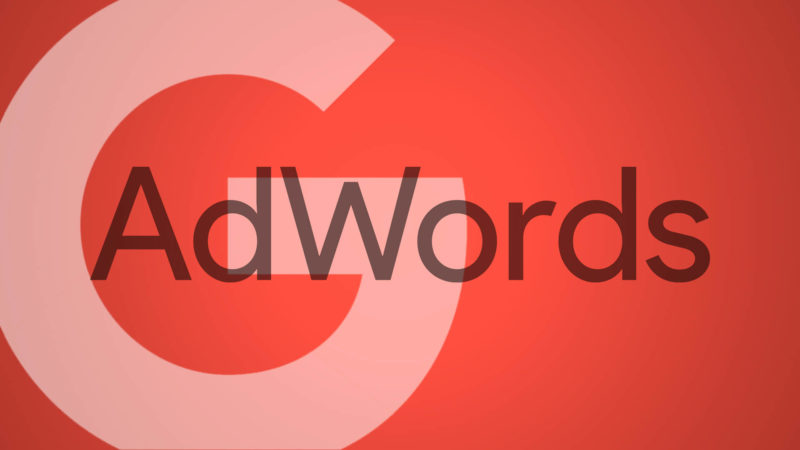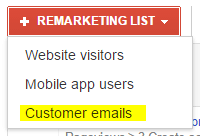Customer Match: Common Questions & How To Answer Them
Feeling apprehensive about using Customer Match? Columnist Laura Collins tackles some frequently asked questions about this relatively new targeting feature in AdWords.
When Google released Customer Match last year, PPCers got very excited. For years we’ve been seeing a noticeable shift in focus from keywords to audiences, and this audience-focused tool promised to revolutionize the way we’re able to communicate with customers.
All that customer data locked away in CRM databases for years could now be tapped as a way to create highly targeted, personalized campaigns. Google has built another section of the bridge between offline and online data.
At my employer (Periscopix, a Merkle Company), we were keen to start using Customer Match across a wide range of clients. But some recurring questions have meant implementation has been slightly slower than expected.
Here we look at some of the main concerns raised by ourselves and our clients, and how these have been addressed.
The Basics
Customer Match is essentially a new way of building remarketing lists in AdWords. First of all, you need a list of email addresses provided to you by customers: this must be first-party data.
This list can be anything — from every customer you’ve ever had to just people who purchased a particular brand of jeans last spring — as long as there are at least 1,000 emails in it.
Google then spends up to 24 hours matching those addresses with Google accounts and creates an audience list that sits in your shared library. That list can then be used to target those users on Search, YouTube or Gmail. Unfortunately, at the moment, this option is not available on the Google Display Network.
It’s understandable that any targeting option using customer email addresses could ring alarm bells, and there were a variety of questions to answer before we could start using Customer Match for our clients.
Does This Mean Google Can Store & Use These Email Addresses?
Google is acutely aware of people’s concerns about data security, and the company provides several reassurances around Customer Match.
Data won’t be used for any purpose other than matching email addresses, which means no sharing with third parties or other Google teams or for enhancing profiles about customers. In fact, once the matching process is complete, the email addresses themselves are deleted seven days after being uploaded.
If that doesn’t allay your fears, the email address lists can be encrypted with the SHA256 algorithm, which is the industry standard for hashing data. That means Google has no visibility whatsoever over those email addresses, and again, all data is deleted after seven days.
Can I Only Upload Gmail Addresses?
The simple answer is no. Uploaded email lists can contain email addresses from any domain, which are then matched by Google. Several B2B clients have expressed concern that very few of their customers would have provided Gmail addresses, so they wouldn’t get a high match rate.
But Google is able to match to any address which is the primary email address associated with a Google account, which can very often be an address on a company domain. It’s true that we’ve seen lower match rates for B2B than B2C, but by no means low enough to say it isn’t worth exploring for those clients, as well.
What Match Rate Can I Expect To See?
This can vary hugely from one client to another. We’ve seen anything from 25 percent for B2B to 62 percent for retail. Unfortunately, there’s no concrete way to predict this.
Google requires a minimum of 1,000 emails in a list for upload into AdWords, but in this case, we’d say bigger is better. First, the minimum remarketing list size requirements of 1,000 users for search and 100 users for YouTube/Gmail apply after matching, so if you’re uploading a list of 1,500 users and only 50 percent matched, you won’t be able to target those users via search.
At Periscopix, we recommend guarding yourself against low match rates by uploading a minimum of 10,000 emails in each list.
What If Someone Opts Out Of Our Database?
Users have to give permission for their email addresses to be used, and, of course, they have the right to revoke that permission at any time.
Managing these changes can be done in one of two ways: via the AdWords API or manually. As with anything involving the API, there’s some development work involved in implementation, but where that isn’t possible, manual updates are fairly simple.
Simply find the remarketing list you created using Customer Match within your shared library, click on the title and then the pencil icon to edit:
And you can then upload a new list of email addresses to add to or remove from your current list:
So it’s quick and simple to make sure the email data you’re using is up-to-date.
Why Use Customer Match, When We Already Have Standard Remarketing Lists?
While AdWords remarketing lists are commonly the foundation of any good remarketing strategy, they’re primarily URL-based, so they’re relatively limited in terms of segmenting people by specific behaviours.
I detailed in an earlier blog that GA remarketing lists offer some more sophisticated options like creating lists of highly engaged users, or lists based on purchase behaviour. But if your CRM data is up to scratch, Customer Match could provide that next level of granularity and enable you to target previous customers based on highly specific criteria that would never have been possible before.
Also, if someone purchased something from you over a year ago, that would immediately rule them out of any RLSA activity, as the membership duration limit is 180 days. With Customer Match, there’s no such limit. You could choose to upload a list of users who purchased products to celebrate the new millennium if you wanted (although I’d advise against that). This could be particularly useful for subscription-based services or seasonal products.
Finally, one of the most exciting new options we’ve been able to explore is remarketing with Gmail Ads, which isn’t possible with AdWords or GA remarketing lists. Having already seen great results from highly engaging Gmail Ads, we’re hoping the addition of remarketing lists, whether just for adjusting bids or for specifically targeting previous customers, will help maximise performance and ROI on what is traditionally more of a brand awareness tool.
Final Thoughts
People get very nervous about Personally Identifiable Information. So much so that some advertisers may rule out Customer Match completely. But to do that is to miss out on a valuable new tool for connecting with your customers.
I hope this column has helped to reassure some doubters out there. And if you still don’t feel comfortable with directly targeting users with their email address, I’d highly recommend uploading email lists and making use of the similar user lists which will then be automatically created by Google. It’s a low-risk way to make use of Customer Match and potentially find some relevant new users.
Opinions expressed in this article are those of the guest author and not necessarily Search Engine Land. Staff authors are listed here.
Related stories
New on Search Engine Land



